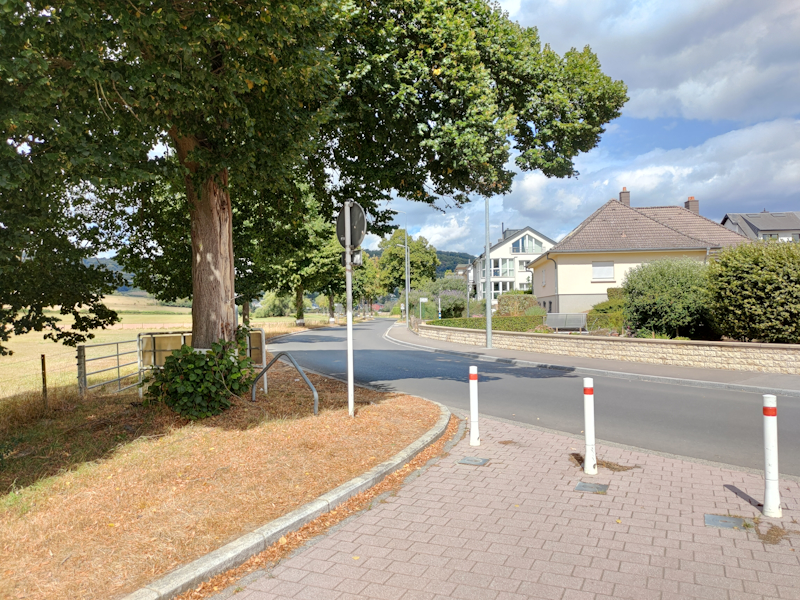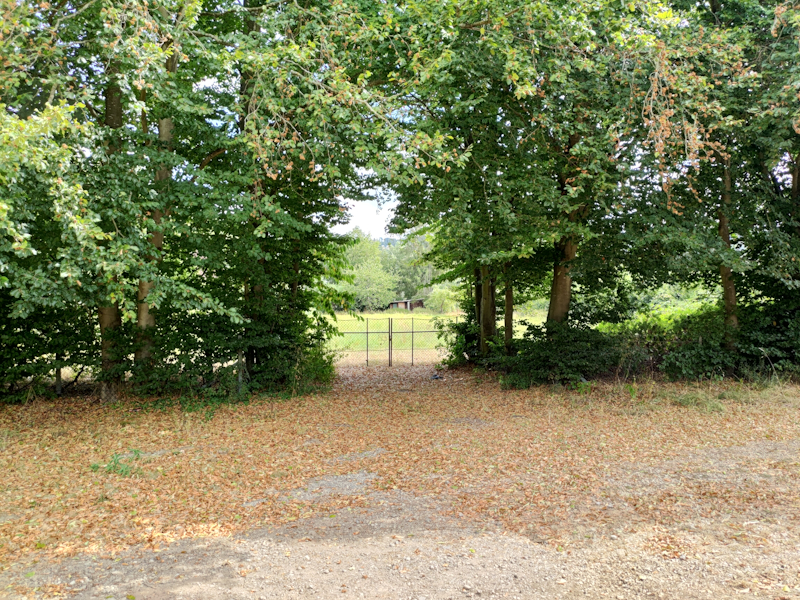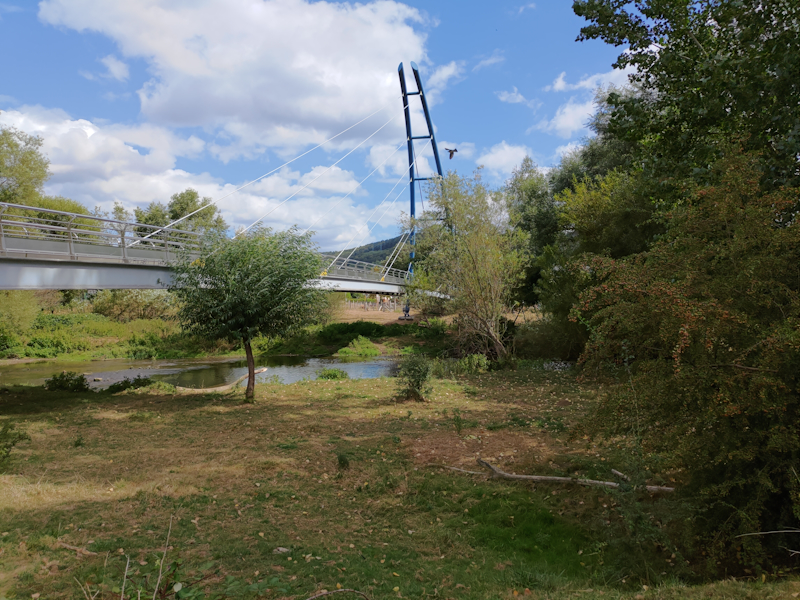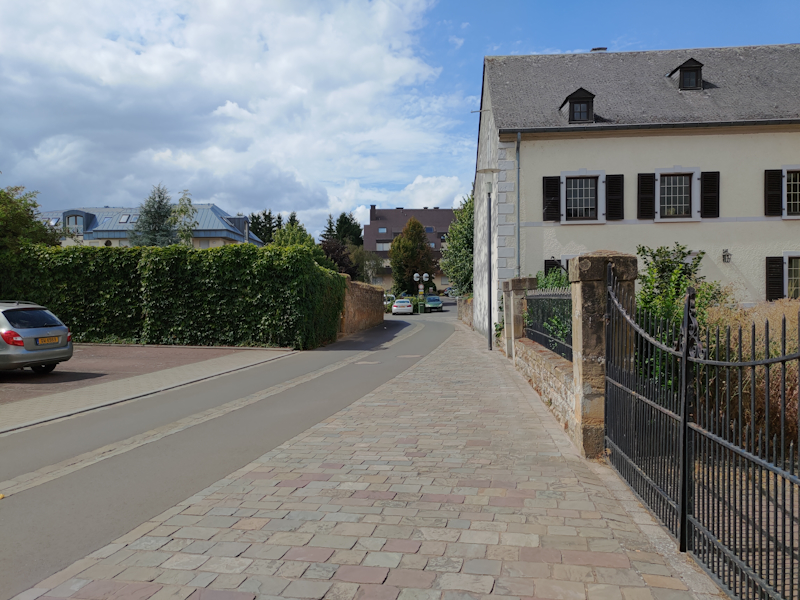The ASUS ZenFone 7 Pro Review: The Triple Flip-Camera
by Andrei Frumusanu on September 1, 2020 3:00 AM EST- Posted in
- Mobile
- Asus
- Smartphones
- ZenFone 7
- ZenFone 7 Pro
Camera - Daylight Evaluation
The cameras on the ZenFone 7 certainly make for a unique aesthetic feature of the phone, but ASUS has also put some effort into upgrading the camera hardware, and the phone certainly boasts the most advanced setup that the company has put into a smartphone.
The main camera sensor is the same that we saw on the ROG3, which is the Sony IMX686 with 64MP and 0.8µm pixels, 4:1 binning down to 16MP 1.6µm in regular shooting modes. The aperture here is f/1.7 which is actually larger than that of the ROG3 so it looks like we’re dealing with different optics on the ZenFone. Finally, the Pro version we’ve tested today also has OIS.
The ultra-wide module of the phone features a newer generation IMX363 sensor with 1.4µm pixels. This is bigger than the unit on the ROG3 and is really only matched by Samsung’s S20 series for an UWA of this wide field of view at 113°. The aperture also is larger at f/2.2 than the f/2.4 of the ROG3.
Finally, ASUS has employed an 8MP telephoto module with 3x optical magnification. Due to the size constraints of the flip-camera housing the sensor is likely to be quite small both in terms of its physical size and pixels.

[ Zenfone 7 Pro ] - [ ROG Phone III ]
[ iPhone 11 Pro ] - [ Galaxy S20+(E) ]
[ Pixel 4 ] - [ X-T30 ]
In the first scene, if we’re comparing the ZenFone to the ROG3 at first glance they seem similar, however upon closer inspection we see that the ZenFone has a quite different look to it when it comes to detail. It looks like the ZenFone was able to retain more dynamic range, with highlight textures not quite as flattened out, and with better shadow detail.
Generally, against the competition, the overall exposure is still quite lacking as textures are still lacking contrast, again likely due to the higher exposure and HDR processing.

[ Zenfone 7 Pro ] - [ ROG Phone III ]
[ iPhone 11 Pro ] - [ Galaxy S20+(E) ]
[ Pixel 4 ] - [ X-T30 ]
The next shot showcases quite a lot of processing differences with the new ZenFone as it’s able to handle colour temperature more accurately than the ROG3, as well a the HDR also doing a better job.
The most shocking difference however is in the detail-retention as there’s a significant increase in sharpness in the ZenFone. Although both devices look similar in the centre of the image, the outer frame and edges aren’t comparable at all as the ZenFone pulls away from the disaster that was the ROG3’s blurry optics.
Using the 64MP picture mode here might make more sense, but it’s very weird that the phone here in this mode decided for an exposure 4x as slow as the default 16MP mode, and subsequently looks a bit flat.
The telephoto camera detail-wise is very good and provides more than sufficient resolution, producing a very competitive result in that regard. The foreground here is a bit darker than I’d have wished so the dynamic range isn’t quite as strong.

[ Zenfone 7 Pro ] - [ ROG Phone III ]
[ iPhone 11 Pro ] - [ Galaxy S20+(E) ]
[ Pixel 4 ] - [ X-T30 ]
The ultra-wide processing is much better on the ZenFone 7 compared to the ROG3, resulting in a more balanced exposure. The phone still struggles though to retain textures in sunlight as the grass is really lacking contrast when compared to say the S20, with both phones having similar class modules and sensors.

[ Zenfone 7 Pro ] - [ ROG Phone III ]
[ iPhone 11 Pro ] - [ Galaxy S20+(E) ]
[ Pixel 4 ] - [ X-T30 ]
An interesting aspect of devices which employ higher magnification telephoto modules is how they handle intermediary zoom levels which are still relegated to the main camera sensor. In ASUS’ case here on the ZenFone 7 we’re seeing an interesting approach, as the phone is seemingly fusing together pixel data from both the 16MP and 64MP modes. You can see this in the 2x shot in the vegetating which has ghost exposures due to them moving in the wind.
The result is somewhat adequate but can’t compete with real 2x modules, or native high-res modules such as the second wide-module of the S20.

[ Zenfone 7 Pro ] - [ ROG Phone III ]
[ iPhone 11 Pro ] - [ Galaxy S20+(E) ]
[ Pixel 4 ] - [ X-T30 ]
Sometimes when the lighting conditions are kind, the ZenFone is able to produce extremely pleasing images in terms of exposure. This scene was good on all of the phone’s modules and very competitive against all other devices.

[ Zenfone 7 Pro ] - [ ROG Phone III ]
[ iPhone 11 Pro ] - [ Galaxy S20+(E) ]
[ Pixel 4 ] - [ X-T30 ]
Unfortunately, that’s not always the case as ASUS’s processing still has a ton of trouble with exposure and HDR. This shot here was overcast at the moment of capture, but the result still looks way to dark and flat, lacking any kind of highlights in the scene and little dynamic range.

[ Zenfone 7 Pro ] - [ ROG Phone III ]
[ iPhone 11 Pro ] - [ Galaxy S20+(E) ]
[ Pixel 4 ] - [ X-T30 ]
In this scene the processing also fell flat on its face on the main camera, and is actually much worse than what we see on the ROG3. Ironically, the ZenFone’s ultra-wide produces a much better exposure and doesn’t decimate textures into flat colour palettes.
Daylight Capture Conclusion - Solid Foundation, Processing Needs Work
Overall, the ZenFone 7 Pro fared quite a bit better than the ROG Phone III and showcases a more usable camera experience. The optics on the ZenFone are much improved and nowhere near the disaster that was the ROG3.
The new ultra-wide and telephoto modules actually performed quite well in the tests, and both are respectable in their capture abilities.
ASUS’s biggest weakness is processing, and although it seems the ZenFone improves thing a bit, many times it still really falls flat on its face with exposure and HDR, many times producing very flat-looking images that have lost a ton of texture contrast. Because of this, I can’t really say that’s it’s a competitive camera as essentially all other camera vendors will be able to outperform the ZenFone 7.










31 Comments
View All Comments
PeachNCream - Tuesday, September 1, 2020 - link
Introducing the ASUS ZenFone 7 with twice as much gimmicky camera market differentiator at a cost of functionality as last year's model!RollingCamel - Tuesday, September 1, 2020 - link
I would suggest a revisit the camera performance for a number of phones while using GCAM. Should be an interesting read.Here is the link for Zenphone 7/pro GCAM files.
https://www.celsoazevedo.com/files/android/p/gcam-...
skavi - Tuesday, September 1, 2020 - link
i was hoping to see the panorama mechanism in action. that’s a really cool idea.eastcoast_pete - Tuesday, September 1, 2020 - link
Thanks Andrei! With video recording being a key interest of mine, the lackluster performance disqualifies this phone for me already. Too bad ASUS spent all their engineering time on gadgetry, and not on making the camera function what it could and should have been.FredFlog - Tuesday, September 1, 2020 - link
I know ASUS is a Taiwanese company but does anyone know exactly in which country this phone is produced / assembled / made?Kashif ali - Tuesday, September 1, 2020 - link
Sir I need Asus Zenfone v 520 kl unitldx00 - Wednesday, September 2, 2020 - link
I think Asus are losing their way. They are not a premium manufacturer for 2 very important reasons. Their software and their support is terrible. I have had many Asus products but I am now seriously going off them. Their hardware is always great, I mean really good, but their software is often buggy and most importantly of all, is never maintained for as long as you might expect and is often abandoned way too quickly, even by budget manufacturer standards, never mind a premium one. At least unlock the bootloader or something so we can keep using the products. I know they have done this for some products but it's too random which products get it and which not. One of the most horrible examples come from their tablets, specifically the Z500KL which I own (zenpad 3S 10 LTE). It was a very expensive tablet, over £300 at the time and was vertigo made and functions well to this day, after 3.5 years of heavy use, yet it shipped with android 6 which was already basically obsolete, then it got 1 android version update to 7 and that was it... Almost no security updates either. They have released a bootloader unlock for the Z500M, the non LTE version, but nothing for the Z500KL. With this kind of attitude, they will never be accepted as a premium phone manufacturer. I have to say though that I do like the flat screen on a top end device. I hate the curved screens and if it wasn't for the software and the ridiculous price, this could well be an attractive set of phones. Also, no headphone jack. Pity...gutsonator - Saturday, September 5, 2020 - link
One of the main issues I have with Asus phones is software rather than hardware. Phone runs fine until you get an update that screws up a major issue like sound or display or even brick your phone completely like what happens to my zenfone 4.Also Asus after zenfone 4 started to cut cost on the OS but removing the customization features they used to provide
gamer1000k - Tuesday, September 22, 2020 - link
I've got a Zenfone 6 and was excited to read about the 7 until I read that the headphone jack was removed, and the price went up 50%. Hard pass.itsjustaprankbro - Wednesday, January 6, 2021 - link
I don't get all these salty comments. I bought a Zenfone 7 Pro and I LOVE this device. The phone feels extra premium. The camera is great. The performance is superb. Sound is great, call quality is great, signal/reception/GPS is great. Everything is awesome about it, I really have NO clue why people are complaining all this much.Before this phone I've had a OnePlus 7 Pro, Mate 20, then a Note 10+, then a Xiaomi Mi 10T Pro. This is the best phone (both software and hardware wise) out all of them, hands down.
No, ASUS have not paid me a cent to make this post. I just truly believe this phone is awesome. I wish they'd have used IPS LCD on this phone as well (just like on the 6), but whatever, it works.